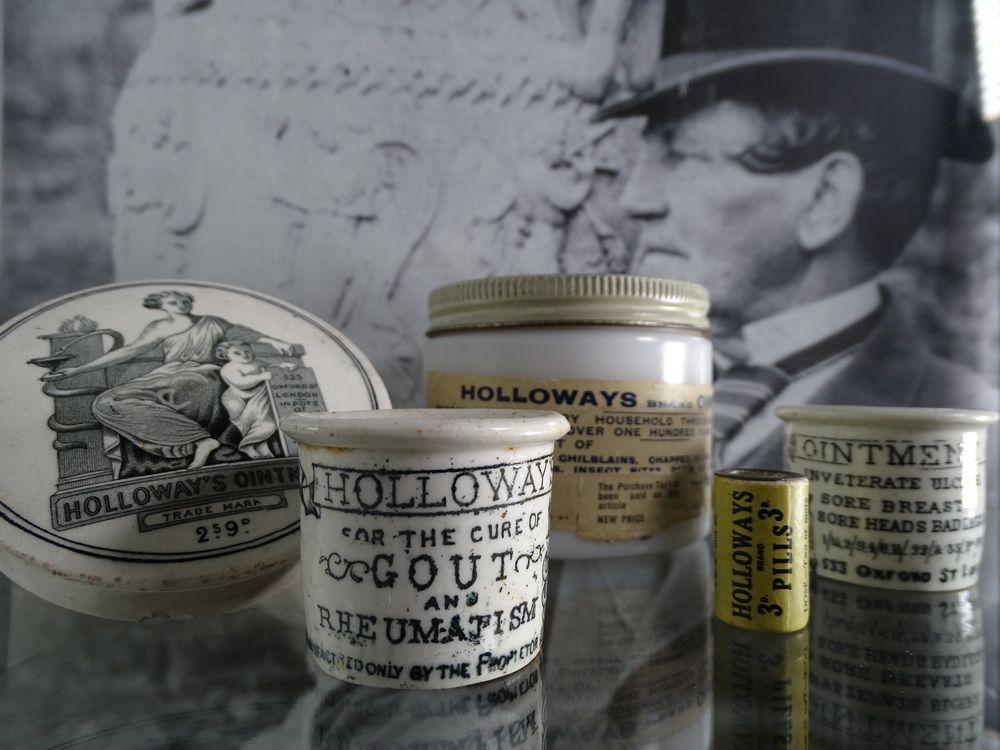New Exhibition – Health, Holloway & Hype – to begin on Magna Carta Day 2019
Our next temporary exhibition, titled ‘Health, Holloway & Hype’ will explore Victorian businessman and philanthropist, Thomas Holloway, the marketing and selling of his ‘cure all’ pills and ointments, and the building of Holloway Sanatorium.
The exhibition will begin on Saturday 15th June 2019, Magna Carta Day, and run until Saturday 22nd June at the United Church of Egham, 10.30am-4.00pm (excluding Sunday 16th June). From Tuesday 25th June, you can find the exhibition at the Egham Museum all summer until October 2019.
We will also be holding a selection of exhibition-related events, find out more about these on our What’s On page.
Your Memories: We would like to hear from you if you or a family member worked or visited Holloway Sanatorium. Please download and complete the Memories of Holloway Sanatorium questionnaire 2019 and return it to us at the Museum. Thank You.
So who was Holloway? Ahead of the opening of the exhibition in two week’s time, take a look below for a brief introduction…
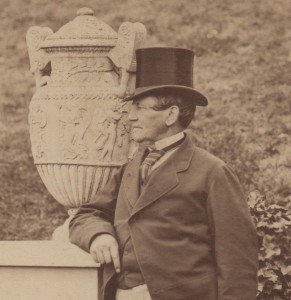 ‘Professor’ Thomas Holloway
‘Professor’ Thomas Holloway
Thomas Holloway, founder of Royal Holloway University and Holloway Sanatorium, was born September 22nd, 1800 in Devonport, a small town near Plymouth. Thomas Holloway was raised in an entrepreneurial family and would follow proudly in the footsteps of his parents.
After his education in Camborne, Cornwall, he spent a brief stint in London before relocating to Roubaix, France. Though documentation of Holloway’s time in Roubaix is slim, he seems to have made a comfortable living for the few years he was there. In 1831 he returned to London and by 1836 was working as foreign and commercial agent. This is where the saga of Holloway’s wealth begins. After fostering connections with Felix Albinolo, an Italian who manufactured and sold all purpose ointment, Holloway embarked on his own business venture.
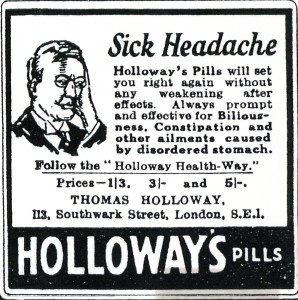 Holloway’s Medicine and Fortune
Holloway’s Medicine and Fortune
Holloway made his money in pills and ointments, attractively packaged, and aimed at the middle and upper middle classes of society. It claimed to be a cure for a variety of things including jaundice, gout, bad legs, and wounds.
Holloway was one of the first to realise the potential of advertising and though it originally put him in debt, it paid off over time and his advertisements began to appear all over the world even including one by the Great Pyramid in Egypt.
Holloway Sanatorium
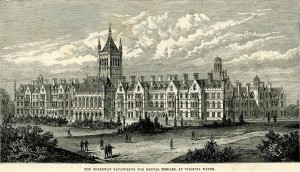
The sanatorium, conceived by Thomas Holloway was designed in an sumptuous Franco-Gothic style by W. H. Crossland and built between 1873 and 1885. It was officially licensed by the Commissioners of Lunacy on the 12th of June 1885 and was officially opened by the Prince of Wales on the 15th June.
When completed the Sanatorium was capable of housing 300, an increase of 100 more inhabitants than was originally planned for. The cost of construction and furnishing was £320,000 which is equivalent to over £21 million in today’s currency.
Holloway College
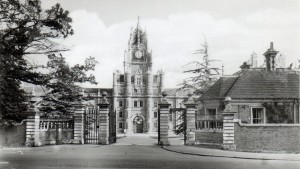
Royal Holloway was built between 1879 and 1886 on a 38 hectare plot of wooded land. The college was opened by Queen Victoria in June 1886 and would welcome it’s first students on October 3rd, 1887.
By 1900 the College became part of the University of London family and in 1965 allowed the first male undergraduates. In 1985 the University merged with Bedford College to become Royal Holloway and Bedford New College.
Since 1992 the University has operated under the title Royal Holloway, University of London, colloquially known as “RHUL”.

